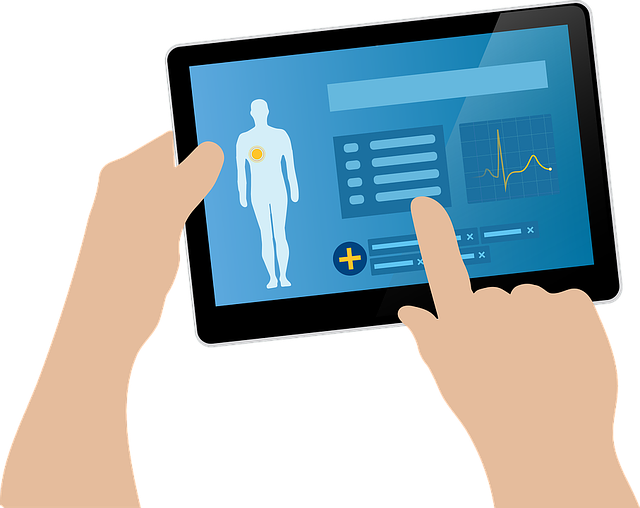
What is the Difference Between an EMR & EHR?
The terms electronic medical record (EMR) and electronic health record (EHR) are often used interchangeably. However, an EMR and an EHR are not the same, despite sharing certain characteristics.
Activity #1
What is the difference? Let’s take a look! Watch this video to watch a brief overview.
Video: EMR vs EHR: What is the difference? (1:46)
As you can see, an EHR is more dynamic and allows data storage and exchange among healthcare providers, institutions, territories, and data repositories. We will explore this more in the next section.
Informatics and technology fit seamlessly into everyday practice without thought. From using a monitor to take vital signs, to smart pumps, to point of care devices, to electronic documentation systems or EMRs, nurses are continuously embedding themselves into informatics. Outside of hospitals, clinics, and homecare, other forms of HIT bring care to our patients through virtual solutions, remote monitoring, and real-time public health surveillance systems.
What are Some Benefits to an Integrated Digital EMR? eSafety!
- Pharmacy orders – Electronic ordering and pharmacy system integration allows for reduced ordering errors due to built-in verifications and dosing ranges for medication orders. Orders are clear for administration and schedules defined. E-prescribing allows
- Medication Reconciliation – With home medications documented in a single system, providers can easily reconcile a patient’s medication during admission, transfer of care, and discharge scenarios to ensure the patient is getting the right medications along the care continuum.
- eMAR – Electronic medication administration records support safer medication administration, with dosing and schedule parameters defined, allowing for added safety alerts, along with increased visibility of the patient’s medication history.
- Barcode Scanning – Allows for best practice positive patient identification workflows inpatient assignments, medication and blood product administrations, specimen collection and processing practices.
- One source of truth – With one integrated EMR solution, patient data is not duplicated and, with proper care from clinicians, information remains up-to-date and accurate allowing for better and faster decision making, fewer redundancies, and easier patient assessments.
- Streamlined workflows and documentation tools allow for more efficiencies and better clarity around care plans, scheduled tasks, patient assessments and decision making. Seamless integration of monitored vital signs allows for early warning signs and drilling down of data to investigate patient events, especially in ICUs.
- Mobile Device Integration – Some EMRs come with secure EMR owned mobile apps that allow clinicians to seamlessly connect to their patients or document from a distance! Functionality such as dictation tools allow for easy note entry for providers, mobile order entry for faster response to care, patient care task schedules and documentation for nurses, mobile uploads of patient photos directly to the EMR, such as wound care assessments, fast access to organizational policies and guidelines.
- Data collection and reporting capabilities are improved, through standardized documentation and health care coding, leading to better decision support, reporting, cost analysis, and enhanced research capabilities.
- Data Storage & Exchange – EMRs allow for easier data integrations among systems, including data repositories, EHRs, patient portals, etc.
Healthcare information systems and technology are expanding and evolving rapidly into exciting possibilities for the future of health care and ultimately even better patient outcomes!
Let’s take a look at some exciting areas at the forefront of health care advances:
The Future of Healthcare Technology:
The following video demonstrates Augmented Reality (AR) technology in healthcare today and in the future.
Activity #2
Video: Augmented Reality in Healthcare (3:53)
Artificial Intelligence (AI) uses complex machine-learning and deep-learning algorithms along with powerful computers to simulate human cognition in the analysis, presentation, and comprehension of complex medical and health care data.
Activity #3
Let’s have a look at how AI is used in health care.
Video: AI in Healthcare: Top A.I. Algorithms In Healthcare – The Medical Futurist (3:21)
Video: How AI could change the future of our health care (2:52)
Video: This AI Is Beating Doctors At Their Own Game (5:52)
You can see that there are exciting changes and benefits to using AI technologies in health care!

